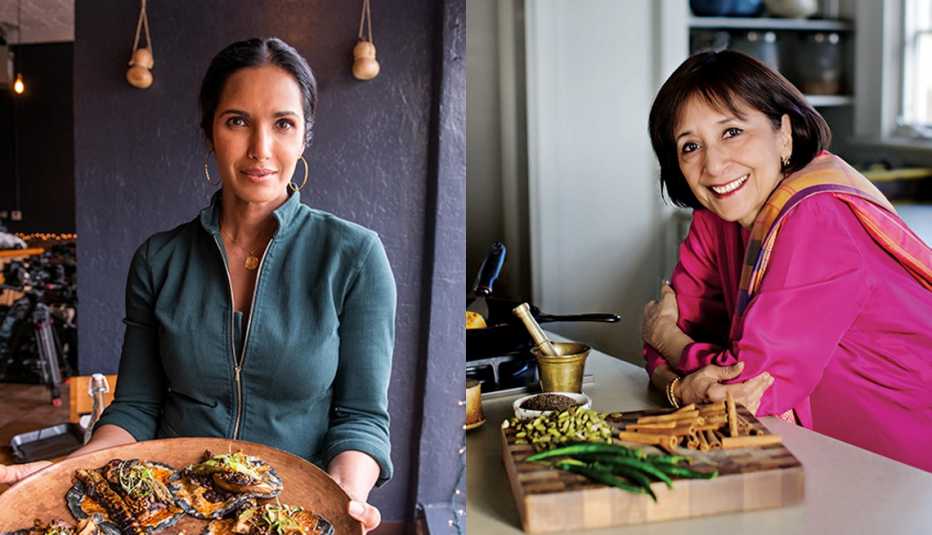AARP Hearing Center
Greg Louganis on hero Duke Kahanamoku
"My parents never hid the fact that I was adopted,” says Greg Louganis, 61. “They told me my birth father was Samoan, but I didn't know what that meant. I only knew that I had darker skin than the other kids.”
Then, when he was 9 years old, the talented young diver traveled to a competition in Fort Lauderdale, Florida, and saw a statue of Duke Kahanamoku, the legendary Hawaiian swimmer, who died in 1968. “I thought, He kind of looks like me,” Louganis recalls. “It was so gratifying to see that someone I resembled could be a champion."
Louganis researched Kahanamoku and learned he was known not only for his five Olympic medals but for popularizing the sport of surfing, until then largely unknown outside of Hawaii.
Having a Pacific Islander to look up to gave Louganis confidence, he adds. Yet it wasn't until he had won three of his own five Olympic medals that he first connected with his Pacific Island heritage in a personal way. At an appearance in Honolulu, he met his biological father, Fouvale Lutu, who had reluctantly given him up for adoption as an infant 24 years earlier. After more contact with Lutu and his other children — Louganis’ half brother and two half sisters — a bond was established. “They're just wonderful, loving, caring people, and I'm grateful to have them in my life,” Louganis notes.
Now that the parents who raised him have died, Louganis and his husband, Johnny Chaillot, spend Christmas with the Lutus. In Waikiki there's a huge bronze statue of Kahanamoku. When Louganis sees it, he says, “I still feel a connection to him, especially now that I have discovered this part of my heritage."


Padma Lakshmi on hero Madhur Jaffrey
Padma Lakshmi had known about Madhur Jaffrey since college. A native of Delhi, the elegant Jaffrey broke barriers — first in the U.K., then in the U.S. — as an award-winning Shakespearean actress, TV host and food writer whose landmark 1973 book, An Invitation to Indian Cooking, is credited with introducing Indian cuisine in the West. “She is a great writer and a great artist,” says Lakshmi, 50, who immigrated to the U.S. from India at age 4. “I just never saw a career like that anywhere else. There were not very many Indian women who were known outside of India for anything but being Bollywood actresses. I always admired her ability to be herself and rise.”
When the two women first met in the early 2000s — Lakshmi's then-husband was an old friend of Jaffrey's — Lakshmi was in the process of inventing her own hyphenate career as a model-actress-writer-food expert. “I still didn't know what my professional life was going to look like,” admits the longtime judge on Bravo's Top Chef and host of Hulu's Taste the Nation. “I had a great admiration for Madhur, but I don't think I appreciated her accomplishments then the same way I do today. Now I know what it takes to have done the things she did, especially at the time she achieved them.”
In Jaffrey, Lakshmi found not only a role model but a mentor and friend. The older woman had learned to cook as an adult, via recipes that her mother mailed to her while she was a theater student in London, so she has a studied and intense relationship with the discipline — an intensity she recognized in Lakshmi. “When Padma really got into food, it was very interesting for me to watch how she explored the area, especially the way she brought attention to cuisines from Asia and around the world,” says Jaffrey, 87. “I have a lot of admiration for her for doing this. It's how our relationship grew.”
The two share a conviction that food is more than just sustenance and sensory pleasure. “People often don't take food seriously, but it's a very serious aspect of a culture, because it has roots in history, religion, geography and just about everything else,” Jaffrey notes. “It's an important part of learning about a country, about a people, about every aspect of their lives.”
Adds Lakshmi, “Food is a way for people to pass their heritage and culture on to their children.” Her international cookbook Tangy, Tart, Hot & Sweet was recently rereleased in paperback.
Asked how she feels about being a pioneer in bringing Indian food to American palates, Jaffrey responds that she doesn't think about it much. “I don't focus on being the first,” she says. “Instead, I think about people carrying on the work that I started. It needs people to take it in all kinds of new directions. I'm so happy to see Padma carry on the work in a wonderful way.”





































































